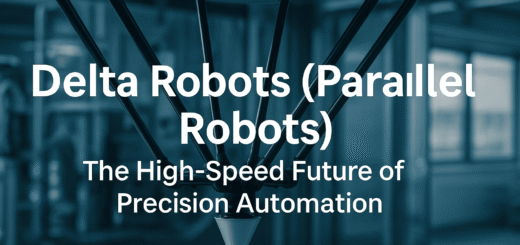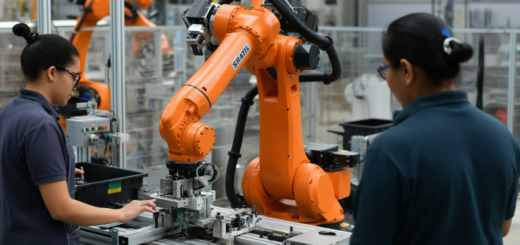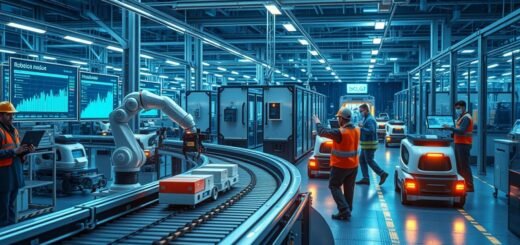The Complete Guide to Articulated Robots: Applications, Benefits, and Future Trends

Have you ever watched a factory assembly line and marveled at those mechanical arms swinging with ballet-like precision? What you’re witnessing isn’t science fiction—it’s articulated robots in action, revolutionizing industries in ways that were unimaginable just decades ago. These versatile machines have become the backbone of modern manufacturing, but their reach extends far beyond assembly lines.
In this comprehensive guide, we’ll explore everything you need to know about articulated robots—from their fundamental design and real-world applications to the latest technological advancements shaping their future. Whether you’re a manufacturing professional looking to optimize production, an engineer exploring automation solutions, or simply curious about these fascinating machines, you’ll discover valuable insights that only industry experts usually possess.
Table of Contents
What Are Articulated Robots?
Articulated robots are sophisticated mechanical systems designed to mimic the flexibility and range of motion of a human arm. Unlike their rigid counterparts, these robots feature multiple rotary joints (typically 4-7 axes) connected by links, allowing them to perform complex movements with remarkable precision.
Anatomy of an Articulated Robot
The design of an articulated robot can be broken down into several key components:
- Base: The foundation that anchors the robot to the ground or mounting surface.
- Rotary Joints (Axes): The connection points between links that allow for rotational movement.
- Links/Arms: The rigid structures connecting the joints.
- End Effector: The “hand” of the robot, customized for specific tasks (gripper, welder, spray gun, etc.).
- Controller: The brain that coordinates movement and executes programmed instructions.
- Servo Motors: The muscles that power joint movement with precise control.
“The true power of articulated robots lies in their versatility,” explains Dr. James Wilson, Professor of Robotics Engineering at MIT. “With their human-like range of motion, they can adapt to an incredible variety of tasks that would be impossible for other robot configurations.”
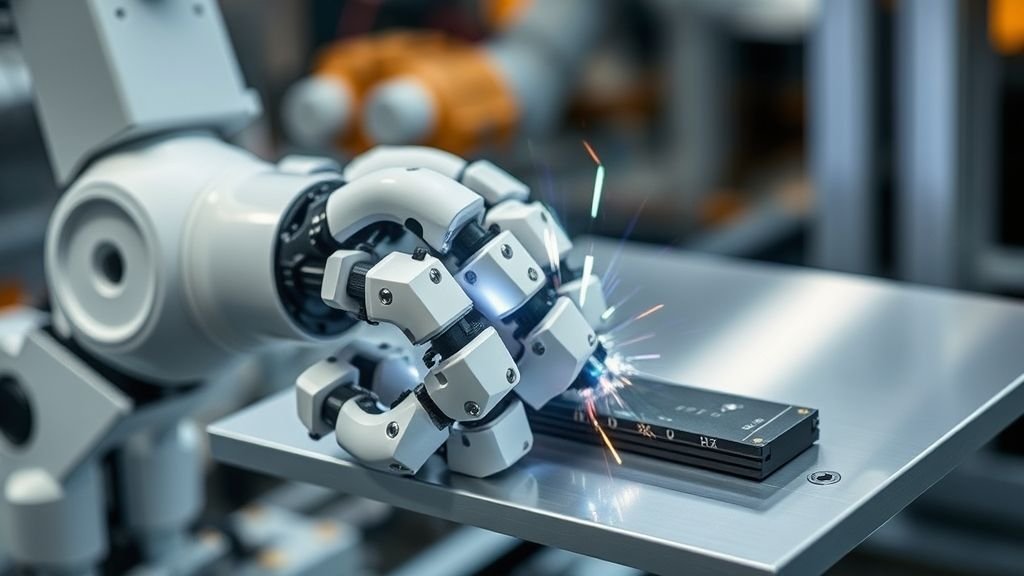
How They Differ From Other Robot Types
While industrial robotics encompasses various designs, articulated robots stand apart due to their distinctive jointed structure. Here’s how they compare to other common robot types:
- SCARA Robots: Faster but with more limited range of motion; better for simple pick-and-place operations
- Cartesian Robots: More precise for linear movements but less adaptable to complex environments
- Delta Robots: Superior speed for light payload sorting but limited workspace and payload capacity
- Collaborative Robots: Similar structure but designed specifically for safe human interaction
The Evolution of Articulated Robots: From Past to Present
The journey of articulated robots began in the early 1960s with the development of the first programmable robotic arm, Unimate, which was deployed at a General Motors factory in 1961. This pioneering invention handled dangerous die-casting tasks, marking the beginning of industrial robotics.
Fast forward to today, and articulated robots have undergone remarkable transformations. Modern versions feature advanced sensors, AI-powered vision systems, and sophisticated control algorithms that enable them to work with unprecedented precision and adaptability.
“When I started in this field 25 years ago, programming a robot to pick up an irregularly shaped object was a major challenge,” recalls Maria Chen, Chief Robotics Officer at AutoTech Industries. “Today’s articulated robots can identify objects, calculate optimal grip points, and adjust on the fly—all within milliseconds.”
The Technological Leap
Today’s articulated robots represent quantum leaps in several key areas:
- Precision: Modern robots achieve repeatability down to ±0.02mm
- Speed: Cycle times reduced by up to 40% compared to models from a decade ago
- Payload Capacity: Advanced models can handle weights exceeding 2,000 kg
- Programming: From complex coding to intuitive teach pendants and even gesture-based training
- Intelligence: Integration with machine learning for adaptive capabilities
Applications Across Industries: Where Articulated Robots Shine
The versatility of articulated robots has led to their adoption across diverse sectors, each leveraging their unique capabilities to solve specific challenges.
Manufacturing and Assembly
Manufacturing remains the primary application domain for articulated robots, where they excel at:
- Welding: Executing precise arc and spot welds with consistency impossible for human welders
- Assembly: Joining components with micron-level precision at high speeds
- Material Handling: Transferring heavy or hazardous materials without fatigue or risk
- Machine Tending: Loading and unloading CNC machines, presses, and injection molding equipment
At Toyota’s manufacturing plants, articulated robots have reduced assembly time for certain components by up to 35% while improving quality consistency by eliminating human error.
Healthcare and Medical Applications
Beyond the factory floor, articulated robots are making remarkable inroads in healthcare:
- Surgical Assistance: Providing surgeons with enhanced precision for minimally invasive procedures
- Rehabilitation: Helping patients recover mobility through consistent, programmed exercises
- Laboratory Automation: Handling dangerous substances and performing repetitive testing procedures
- Medication Dispensing: Ensuring accurate preparation and distribution of pharmaceuticals
“Articulated robot assistance has allowed us to perform surgeries that would otherwise be impossible,” notes Dr. Sarah Johnson, Head of Robotic Surgery at Cleveland Medical Center. “Their stability and precision mean we can make smaller incisions, resulting in faster patient recovery times.”
Food and Beverage Industry
The food sector presents unique challenges that articulated robots are increasingly equipped to handle:
- Packaging: High-speed sorting and packaging of fragile food items
- Palletizing: Organizing packaged goods for efficient distribution
- Primary Food Handling: Processing raw ingredients with specialized end effectors
- Quality Control: Visual inspection of products using integrated camera systems
Aerospace and Automotive
In high-precision industries where tolerances are measured in fractions of millimeters:
- Composite Layup: Placing carbon fiber materials with precise orientation
- Surface Finishing: Polishing and sanding complex contoured surfaces
- Paint Application: Ensuring uniform coverage with minimal waste
- Component Installation: Placing heavy or awkward parts with perfect alignment
Benefits of Implementing Articulated Robots
The growing adoption of articulated robots across industries isn’t coincidental—it’s driven by compelling advantages they offer over both human labor and other automation solutions.
Productivity and Efficiency Gains
Articulated robots deliver measurable improvements in operational metrics:
- Continuous Operation: 24/7 productivity without breaks, vacations, or shift changes
- Speed: Completing tasks significantly faster than human workers (often 2-5x quicker)
- Consistency: Maintaining quality standards without variation due to fatigue
- Reduced Cycle Times: Optimizing movements to minimize wasted motion
A 2023 study by the International Federation of Robotics found that companies implementing articulated robots in manufacturing saw average productivity increases of 30% within the first year.
Enhanced Safety and Reduced Workplace Injuries
By taking on dangerous tasks, articulated robots create safer workplaces:
- Hazardous Environments: Handling toxic substances, extreme temperatures, or dangerous machinery
- Ergonomic Improvements: Eliminating repetitive motion injuries and back strain from heavy lifting
- Collaborative Models: Advanced sensors allowing safe human-robot collaboration
“Our workplace injury rates dropped by 87% after implementing articulated robots for heavy lifting operations,” reports Thomas Garcia, Safety Director at Continental Manufacturing. “The ROI isn’t just in productivity—it’s in the wellbeing of our workforce.”
Quality Improvements and Consistency
The precision of articulated robots translates directly to product quality:
- Reduced Defect Rates: Studies show up to 90% reduction in quality defects in robotic assembly lines
- Elimination of Human Error: Consistent execution of programmed movements without fatigue-induced mistakes
- Real-time Quality Monitoring: Integration with vision systems for immediate defect detection
Cost Savings Beyond Labor
While labor reduction often drives initial interest in robotics, experienced implementers discover additional financial benefits:
- Reduced Material Waste: Precise application of materials like adhesives, paint, and sealants
- Energy Efficiency: Optimized movements consuming less power than older machinery
- Lower Warranty Claims: Fewer product defects leading to reduced post-sale service costs
- Space Utilization: Compact footprints compared to specialized machinery
Challenges and Considerations for Implementation
Despite their advantages, integrating articulated robots successfully requires navigating several challenges:
Initial Investment and ROI Calculations
The upfront cost of articulated robots remains significant, with industrial models ranging from $50,000 to over $200,000 depending on specifications. Organizations must conduct thorough ROI analysis considering:
- Total Cost of Ownership: Purchase price, installation, programming, maintenance, and training
- Payback Period: Typically 1-3 years depending on application and utilization
- Opportunity Cost: Benefits of redeploying human workers to higher-value tasks
- Scalability: Future expansion requirements and compatibility needs
“Companies often make the mistake of looking only at the robot’s price tag,” warns financial analyst Michael Rivera. “The true calculation must include productivity gains, quality improvements, reduced waste, and eliminated overtime costs to see the complete picture.”
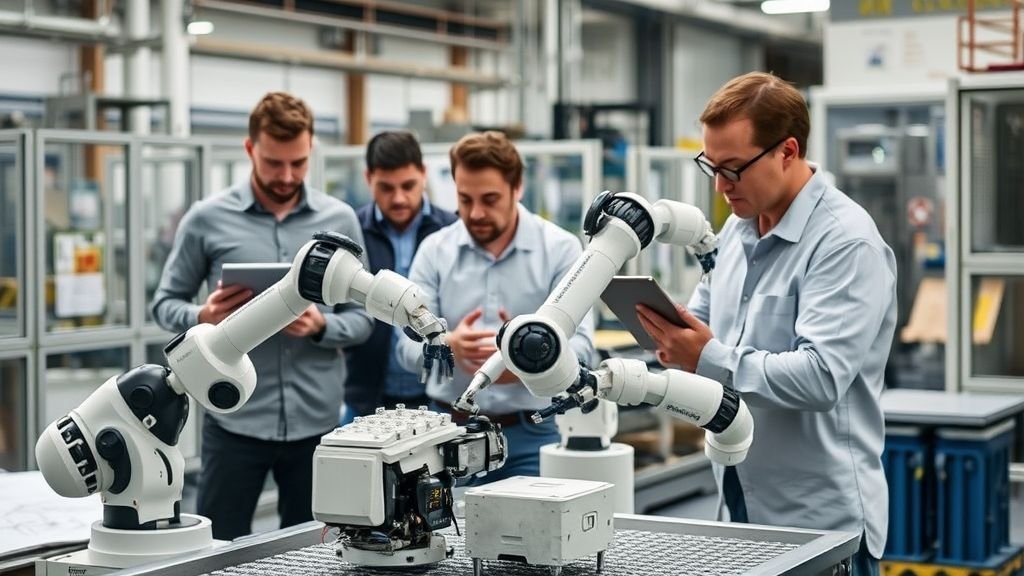
Technical Expertise and Training Requirements
Successful implementation demands specialized knowledge:
- Programming Skills: Traditional coding or newer teach-by-demonstration methods
- Maintenance Capabilities: Preventive and corrective maintenance procedures
- Integration Expertise: Connecting robots with existing systems and production lines
- Safety Protocol Development: Establishing proper safeguards and emergency procedures
Integration with Existing Systems
Few articulated robots operate in isolation—most must connect seamlessly with:
- ERP and MES Systems: Enterprise resource planning and manufacturing execution systems
- Quality Control Systems: In-line inspection and reporting tools
- Supply Chain Management: Inventory control and material handling systems
- Legacy Equipment: Existing machinery that must interface with new robotic systems
Choosing the Right Articulated Robot
Selecting the optimal articulated robot involves evaluating several critical factors:
Key Specifications to Consider
When comparing models, focus on these essential specifications:
- Payload Capacity: Maximum weight the robot can handle reliably
- Reach: Maximum distance the arm can extend
- Repeatability: Precision in returning to the same position (typically ±0.1mm or better)
- Speed: Maximum velocity and acceleration capabilities
- Number of Axes: More axes provide greater dexterity but increased complexity
- Control System Compatibility: Integration with preferred programming environments
Industry-Specific Requirements
Different applications demand specialized features:
- Food Processing: Food-grade materials, wash-down capabilities, and sanitary design
- Pharmaceutical: Cleanroom certification and validation documentation
- Automotive: High-speed capabilities and heavy-duty construction
- Electronics: Ultra-high precision and ESD (electrostatic discharge) protection
Top Manufacturers and Models
The articulated robot market features several established leaders:
- FANUC: Known for reliability and extensive model range
- ABB: Strong in precision applications with user-friendly programming
- KUKA: Recognized for innovation and heavy payload handling
- Universal Robots: Pioneers in collaborative robot (cobot) technology
- Yaskawa Motoman: Respected for longevity and versatility
The Future of Articulated Robots: Emerging Trends
The evolution of articulated robots continues at an accelerating pace, with several key trends shaping their future:
AI and Machine Learning Integration
Artificial intelligence is transforming articulated robots from programmable machines to learning systems:
- Adaptive Gripping: Self-adjusting to various object shapes without reprogramming
- Path Optimization: Automatically finding the most efficient movement sequences
- Quality Prediction: Identifying potential defects before they occur
- Self-Diagnosis: Predicting maintenance needs based on performance patterns
“The next generation of articulated robots won’t just follow instructions—they’ll improve their own performance through experience,” predicts Dr. Elena Vasquez, AI Robotics Researcher at Stanford. “We’re moving from programmed automation to true machine intelligence.”
Collaborative Robotics Revolution
The fastest-growing segment in the articulated robot market is collaborative robots (cobots):
- Human-Safe Design: Rounded edges, force limitations, and advanced sensing
- Intuitive Programming: Simplified interfaces requiring minimal technical expertise
- Portability: Lighter weight designs that can be redeployed as needed
- Accessibility: Lower price points opening robotics to smaller businesses
Mobile Articulated Robots
Fixed installation is no longer a limitation as robots gain mobility:
- AMR Integration: Articulated arms mounted on autonomous mobile robots
- Flexible Manufacturing: Robots that relocate themselves based on changing production needs
- Multi-Zone Operation: Single robots serving multiple workstations
End Effector Innovations
The “hands” of articulated robots are becoming increasingly sophisticated:
- Multi-Function End Effectors: Tools that can change their configuration without human intervention
- Soft Grippers: Adaptable gripping surfaces for handling delicate or irregularly shaped objects
- Tactile Sensing: Pressure and texture feedback similar to human touch
- Vision-Guided Manipulation: Camera-integrated grippers for precise object handling
FAQs About Articulated Robots
What industries benefit most from articulated robots?
Manufacturing remains the primary beneficiary, particularly automotive, electronics, food processing, and aerospace industries. However, we’re seeing rapid adoption in healthcare, logistics, and even agriculture as the technology becomes more accessible and adaptable.
How long does it take to implement an articulated robot system?
Implementation timelines vary significantly based on complexity. Simple pick-and-place applications might be operational within 2-4 weeks, while integrated production cells with multiple robots can take 3-6 months from planning to full production.
Are articulated robots taking human jobs?
While articulated robots do automate tasks previously done by humans, the reality is more nuanced than simple job replacement. Most companies redeploy workers to higher-value positions that require uniquely human skills like problem-solving, customer interaction, and creative thinking. The World Economic Forum projects that while robots will displace 85 million jobs by 2025, they’ll create 97 million new roles.
How difficult is it to program articulated robots?
Programming complexity has decreased dramatically. Traditional robots required specialized coding knowledge, but modern systems offer intuitive interfaces, graphical programming environments, and even teach-by-demonstration capabilities where operators physically guide the robot through desired movements.
What maintenance do articulated robots require?
Typical maintenance includes regular lubrication, cable inspection, preventive replacement of wear components, and software updates. Most manufacturers recommend scheduled maintenance every 3-6 months, with more comprehensive servicing annually. Modern robots also feature self-diagnostic capabilities that alert operators to potential issues before failures occur.
Conclusion: The Articulated Advantage
Articulated robots have transformed from specialized equipment into versatile tools driving innovation across industries. Their human-like flexibility combined with machine precision creates unique capabilities that continue to expand with each technological advancement.
As we’ve explored throughout this guide, the benefits extend far beyond simple automation—articulated robots enhance quality, improve safety, and enable manufacturing possibilities that would be impossible through other means. From massive industrial arms handling car bodies to precise collaborative robots working alongside surgical teams, their impact will only grow as technology advances.
For businesses considering implementation, the question is increasingly shifting from “Should we invest in articulated robots?” to “How quickly can we integrate this technology to remain competitive?” As costs decrease and capabilities increase, those who embrace these versatile machines position themselves at the forefront of their industries.
What’s your experience with articulated robots? Have you implemented them in your operations or seen them in action? Share your thoughts in the comments below!
This comprehensive guide was developed with input from robotics engineers, manufacturing specialists, and technology forecasters to provide the most accurate and actionable information about articulated robots available today.
